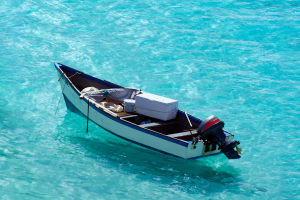Wind energy represents the direction of future energy development, with the size of wind turbines continuously increasing and costs decreasing, providing more energy sources for global energy supply. A survey of 163 experts shows that turbine sizes are growing larger.
What wind is blowing today?
Wind is a natural phenomenon on Earth caused by solar radiation. Sunlight heats the Earth's surface, causing the air above it to expand and rise. As the warm air rises, cooler air moves in horizontally, and as the rising air cools and becomes denser, it descends. The uneven heating of the Earth's surface results in the movement of air, creating wind.
When we talk about "what wind is blowing today" or "the wind is strong today," scientifically, the wind is described comprehensively by its direction, speed, and scale. Wind speed refers to the horizontal distance air moves in a unit of time.
The wind scale categorizes wind intensity into 13 levels, referred to as the Beaufort scale, ranging from 0 to 12. Wind direction indicates the direction from which the wind is blowing, such as a north wind blowing from the north to the south. Wind direction is typically represented using eight cardinal directions: north, northeast, east, southeast, south, southwest, west, and northwest.
History of Human Wind Utilization
The history of human wind energy utilization dates back to ancient times. In the 2nd century BCE, the ancient Persians used vertical-axis windmills for milling grain. In the 10th century, people used windmills for water pumping, and by the 11th century, windmills were widely used in the Middle East.
Windmills were introduced to Europe in the 13th century and became indispensable in the 14th century. In the Netherlands, windmills were initially used for draining lakes and wetlands in the Rhine River delta, and later for oil pressing and lumber sawing.
The United States initiated federal wind energy programs as early as 1974. These programs aimed to assess national wind resources, study social and environmental issues related to wind energy development, improve wind turbine performance, and reduce costs. Research focused on wind turbines smaller than 100 kW for agricultural and other users, as well as megawatt-scale wind turbines for utility companies and industrial users.
The United States has since become the country with the highest installed wind turbine capacity in the world, exceeding 20,000 MW, with an annual growth rate of 10%. The world's largest modern wind turbine has been installed and operated in Hawaii, with a blade diameter of 97.5 meters and weighing 144 tons.
Wind turbine blade pitch adjustment and turbine operation are computer-controlled, generating an annual output of 10 million kWh. According to statistics from the US Department of Energy, wind power generation in the United States accounted for 1% of total electricity generation by 1990.
Significant technological advancements have been made in the past two decades. Wind energy, as a clean energy source, is utilized for electricity generation as it does not require fuel, emits no radiation, and does not contribute to air pollution. Therefore, wind energy has become a sustainable solution for production and domestic energy needs.


